Did you know that one of the most wonderful types of birds on the planet doesn’t mind getting a little drunk off fermented fruit?
In this post, you’ll discover the ultimate list of facts about Bohemian waxwings, a very special little bird!
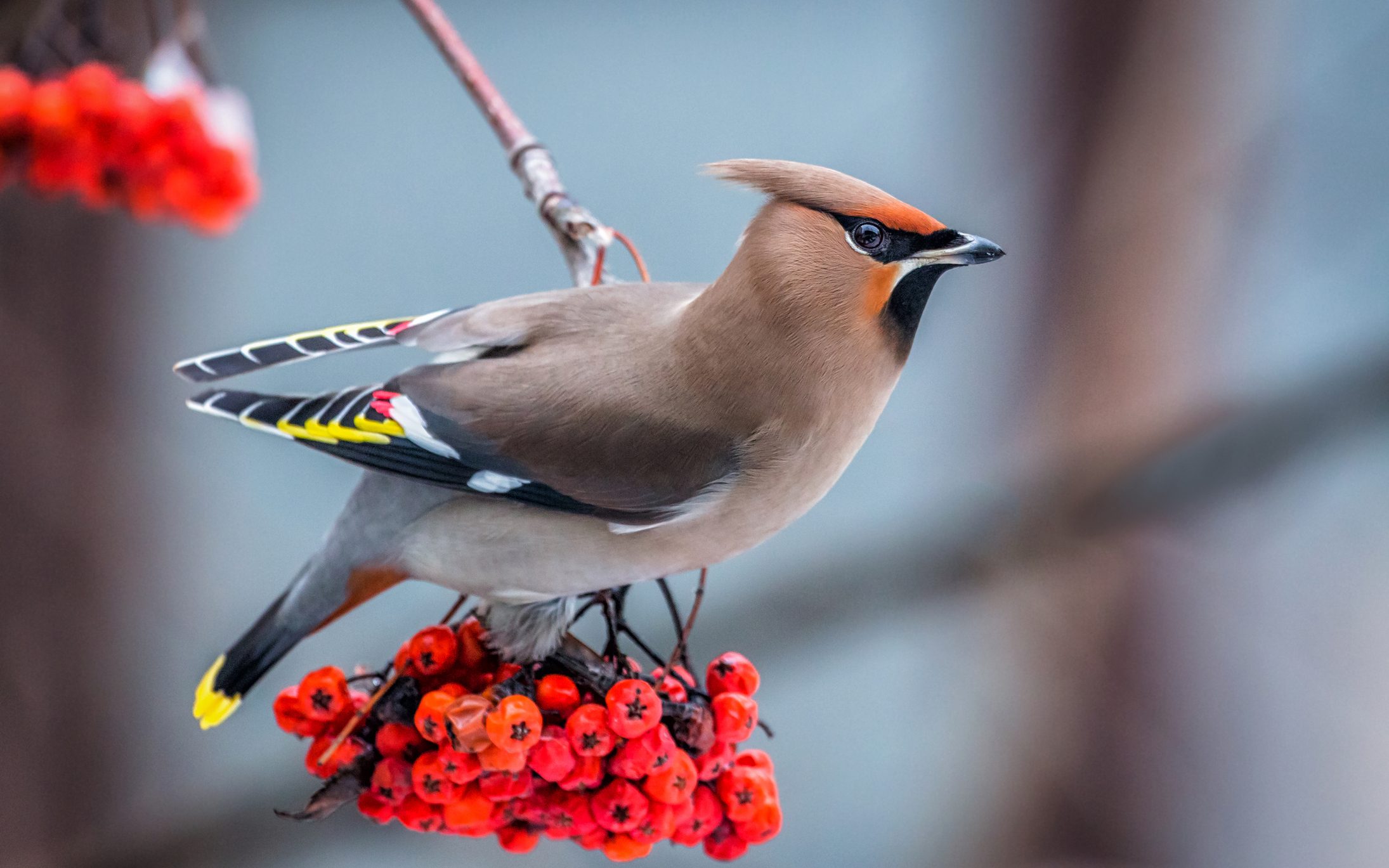
1. They are part of the waxwing family
The Bohemian waxwing, also known by its scientific name of “Bombycilla garrulus,” is a passerine type of bird, an order that consists of over half the bird species on the planet.
They are part of the waxwing family, and Carl Linnaeus described these birds in his 10th edition of Systema Naturaein 1758. They were referred to by him as the “Lanius Garrulus,” and in 1808 they were placed in the genus “Bombycilla.”

2. There are 3 different types of waxwings in the genus Bombycilla
This family and genus consist of 3 different species of birds:
- Bohemian waxwing (B. Garrulus)
- Japanese waxwing (B. Japonica)
- Cedar waxwing (B. Cedrorum)
All 3 species look very much alike and can only be recognized by small details that differ. The cedar waxwing is a bit smaller than the Bohemian waxwing and has a yellow belly, while the Japanese waxwing has red at the end of its tail and a larger black mask. It also doesn’t have a yellow stripe on its wings.

3. The name of the genus is a combination of Greek and Latin
So what does “Bombycilla” mean?
It’s a combination of the Greek word “bombux,” which means “silk,” and the Modern Latin word “Cilla,” which means “tail.” So the name of the genus refers to the fact that these birds have a soft and silky tail.
They are fond of keeping their feathers nice and silky as well because they love to indulge in preening, a maintenance behavior in which birds use their beaks to keep their feathers clean.
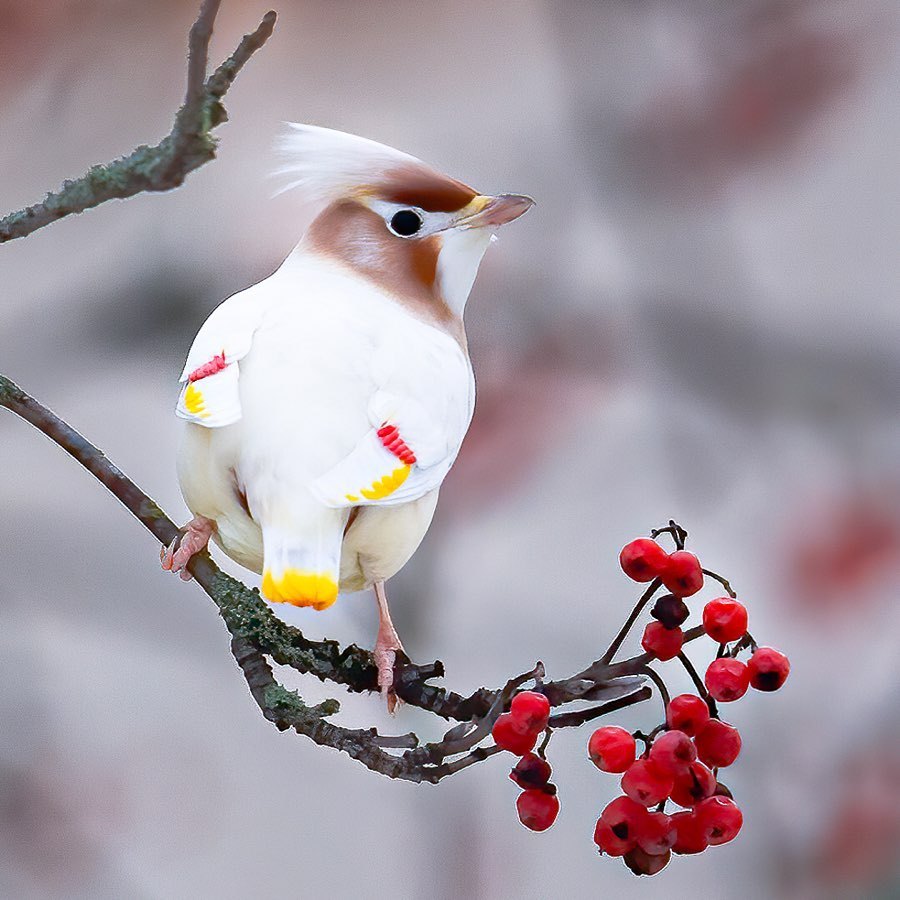
4. How big are Bohemian waxwings?
Bohemian waxwings are medium-sized birds and can grow anywhere between 19 and 23 centimeters (7.5 and 9.1 inches) in length and have a wingspan of between 32 and 35.5 centimeters (12.6 and 14.0 inches).
The average weight of this type of bird is about 55 grams (1.9 oz).

5. The tip of their wing gives the species its English name
So why are these birds called “Bohemian waxwings?”
The waxwings part of the name refers to the red and waxy tips of the secondary feathers of the bird. These look very similar to drops of sealing wax.
The Bohemian part probably refers to the original name of the bird given by Swiss naturalist Conrad Gessner in 1555 which was “Garrulus Bohemicus.” Garrulus means “talkative” in Latin and Bohemicus might refer to what was then considered the origin of this type of bird, Bohemia, a region in the present-day Czech Republic.

6. The female looks very similar to the male Bohemian waxwing
Unlike other similar birds such as the Northern Cardinal or the silky-flycatcher, the female Bohemian waxwing looks very similar to the male.
They can only be differentiated by the less distinctive markings on the tail and wings, especially the yellow stripes. The females also have a less distinctive black throat which makes it easy to spot a male individual.

7. The range of Bohemian waxwings is huge
The range of the Bohemian waxwings extends all across the northern part of Eurasia and North America. Their natural habitat is the forests in these parts of the world, preferably near such as lakes or rivers.
This doesn’t mean that these birds are hard to spot. When food gets scarce in the winter months, they are very likely to scour around residential areas to fill their bellies!
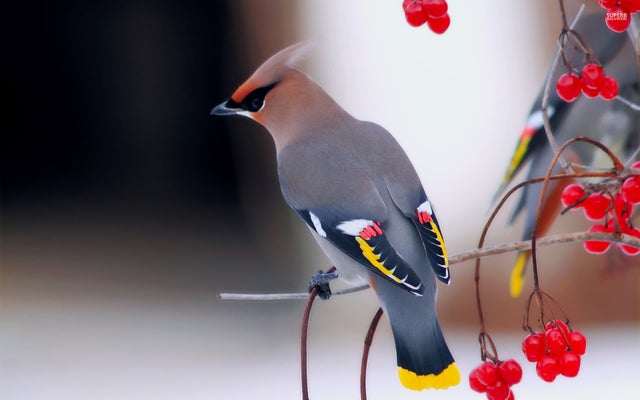
8. What do Bohemian waxwings eat?
These birds are for the most part fruit eaters and love to indulge in eating, especially various types of berries. And when we say they love to eat berries, it’s serious! Some birds can easily eat hundreds of berries a day!
One of the most amazing facts about Bohemian waxwings is that one bird was recorded eating between 600 and 1,000 cotoneaster berries in six hours, an incredible amount for such a relatively small bird!
In the winter months, they also eat insects such as mosquitoes and midges, and some types of spiders are consumed by Bohemian waxwings as well.

9. They breed in the north and move south during the winter
These birds are migratory, which means they breed in the northern parts of their range, and move south during the winter months.
This migration usually starts in September when the temperatures start to drop in the cold northern parts of their breeding range.
One of the most fascinating facts about Bohemian waxwings is that they also never return to the same location during the breeding season. Some birds can be found thousands of kilometers east or west from the location they spent the breeding season the previous year!

10. Are Bohemian waxwings monogamous?
Yes, Bohemian waxwings are monogamous birds!
Both the male and females build the nest, which consists of twigs and is built in a tree, preferably a pine tree. The female incubates the 3 to 7 eggs she lays in the nest for about 2 weeks.
The chicks are completely naked and have bright red beaks. They are fed by both the parents and their initial diet usually consists of insects. After just 2 weeks of feeding, the chicks fledge, and the parent’s job is for the most part complete.

11. They have a high tolerance for alcohol
One of the most remarkable facts about Bohemian waxwings is they they have an unusually large liver. This organ is needed to turn the sugars from the copious amounts of fruits they devour into energy.
Because their liver is capable of processing so much sugar, they are also quite good at digesting fermented fruits, much better than humans! This means that they don’t easily get drunk, even though they sometimes overdo it which might have fatal consequences!

12. Are Bohemian waxwings endangered?
The life expectancy of these birds depends on where they live. In North America, the maximum recorded age is only 5 years and 10 months. In Europe, this was 13 years and 6 months, a huge difference!
Because their range is so extensive, they are marked as “Least Concern” on the IUCN Red List, which means they are far from being endangered. The estimated population is anywhere between 14 and 30 million individuals as well!

Bohemian Waxwing in White
Leucism or pigmentation loss results in partial coloring in individuals, like this amazing Bohemian waxwing:

Very striking, isn’t it! A white waxwing would catch your eye anyway, but the red and yellow wing and tail tips are the truly arresting parts. Wow.
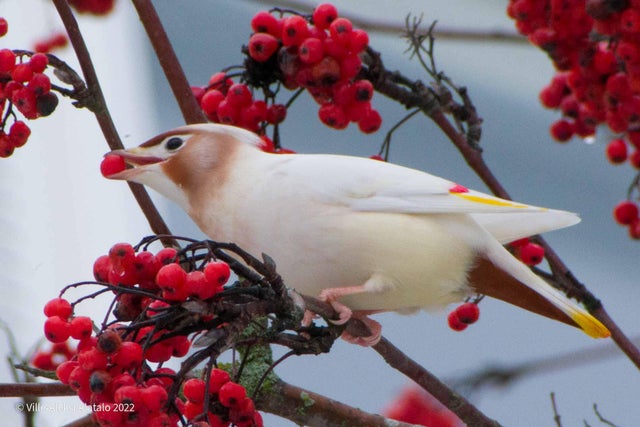

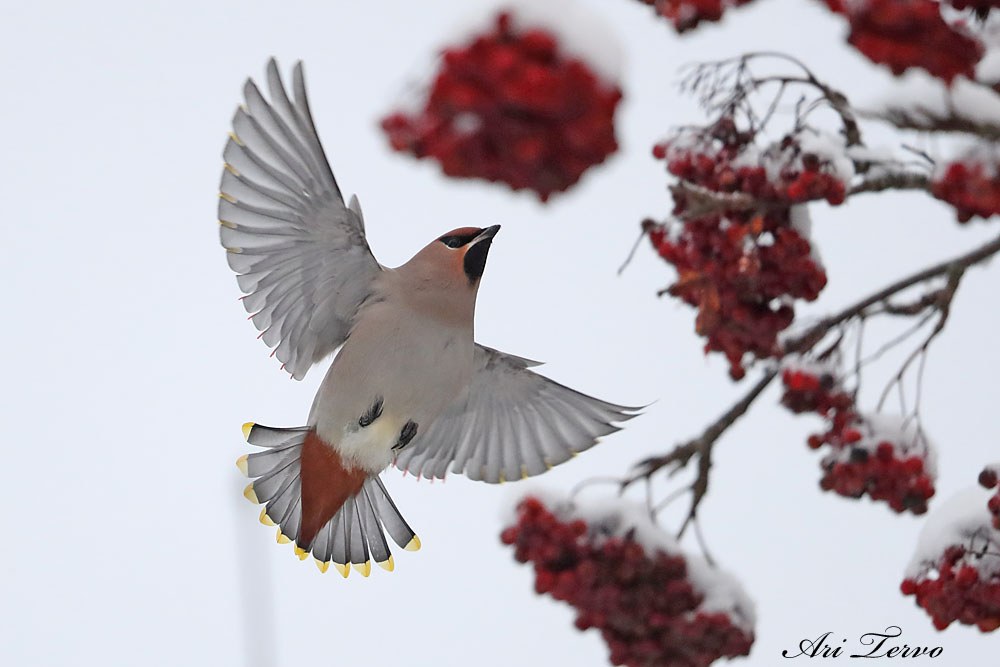
I just can’t but wonder how well one would do in nature. In northern Fennoscandia it would be okay in the winter, because even with the climate change the northern Nordic areas get snow, but summer might be tough.

